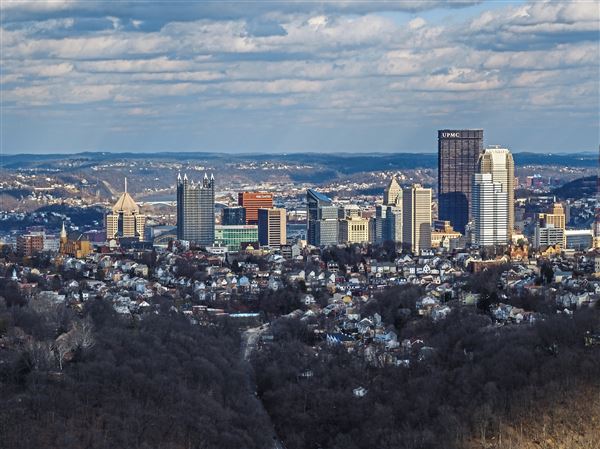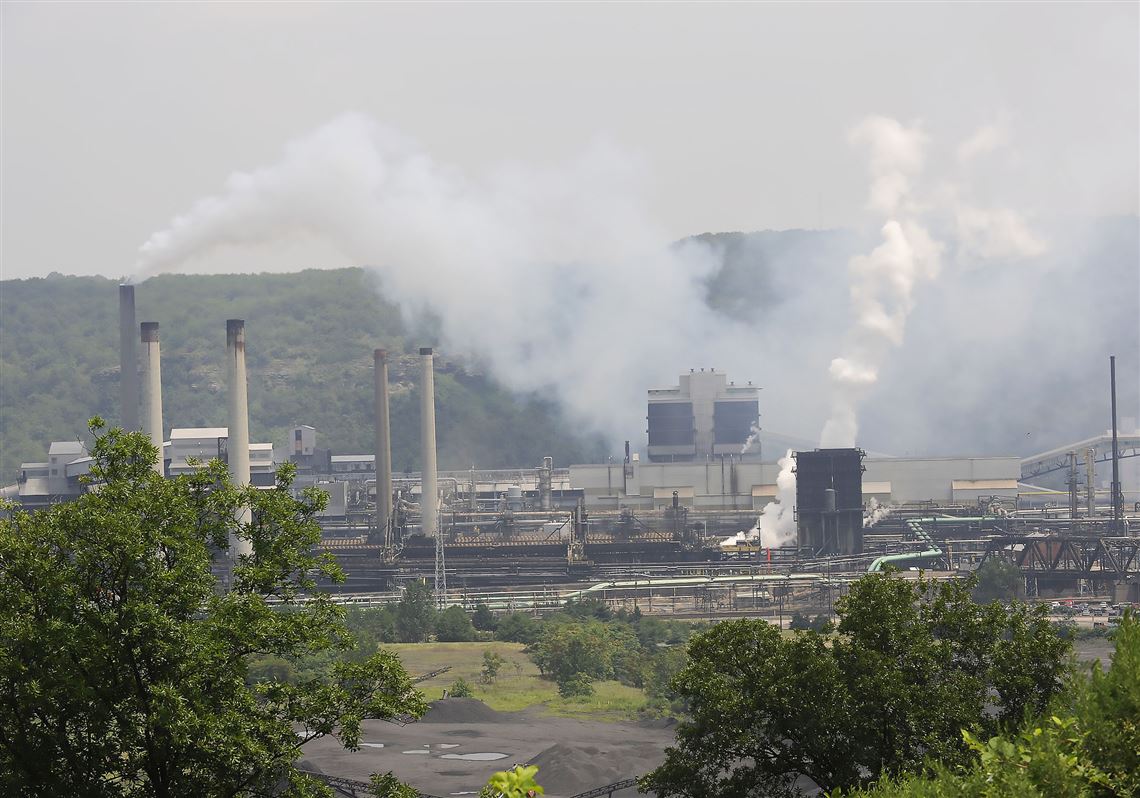Pittsburgh’s air quality is among the worst in the nation and not improving, according to a new study from the American Lung Association.
The findings come in the association’s annual “State of the Air” report based on data from 2014 to 2016.
Pittsburgh’s metro region, which consists of Western Pennsylvania and small portions of West Virginia and Ohio, fell from 17th to 10th worst out of 201 regions for daily measure of fine particulate (PM 2.5) pollution, according to the study.
Allegheny County in particular received straight F grades for ozone, daily particulate matter levels and long-term particulate levels, making it the only county outside of California to receive straight F’s in all three categories.
Read the Post-Gazette’s special report on the air we breathe: Mapping Mortality
Of all counties in the state, only Allegheny experienced an increase in the frequency of unhealthy days for particulate pollution, 6 to 8.5 — the highest in any county east of Utah.
The report might be surprising, considering that particulate levels continue to decline, albeit at a slower pace than areas across the nation.
“Air quality in Pittsburgh has gotten dramatically better over the past 20 years (and longer),” said Neil Donahue, director of Carnegie Mellon University’s Steinbrenner Institute for Environmental Education and Research. For example, there have been notable reductions in sulfur-oxide (SOx) pollution with nitrogen-oxide (NOx) levels also dropping in the region.
As for pollution controls and vehicle emissions standards, he said, “that stuff works.”
“Comparing our air today to our past air de-emphasizes the need to advance improved health for our region’s residents,” said Matthew Mehalik, executive director of Breathe Project at the Energy Innovation Center in the Hill District. “Comparing Pittsburgh to its past is a poor benchmark of performance.”
He said better benchmarks are comparisons with other major metropolitan regions or levels that science says are protective to health. “From that perspective, he said, “Pittsburgh does not do so well.”
The idea of reductions “across the country,” Mr. Donahue said, is germane because “we are all in a race (or were) toward improved air, and so when it comes to rankings it is also a story of whether we are doing better at improving than other municipal areas — location, location, location.”
More than half of Pittsburgh’s pollution is remote — meaning it is coming from elsewhere or “upwind,” which likely always will be the case” with pollution affecting the city coming from a 500-mile radius, with most coming westward, said Mr. Donahue, who holds a doctorate degree in meteorology with postdoctoral work in chemistry and physics. “We are more or less in the middle-eastern end of the industrial Midwest,” which means we eventually receive its pollution.
Meanwhile, almost half of our pollution is local, given very deep river valleys that tend to trap emissions, based on conditions. The region’s major polluter is the U.S Steel Corp.’s Clairton Coke Works in the Monongahela River Valley.
In 2010, the Pittsburgh Post-Gazette published the “Mapping Mortality” project based on the newspaper’s age-adjusted epidemiological study, which showed 14,636 deaths above the national average from 2000 through 2008, in a 14-county area of southwestern Pennsylvania.
An adjustment for excess smoking among women in the region reduced pollution mortality to just under 13,000, based on pollution-related deaths from heart and respiratory disease, with elevations in lung cancer deaths mostly in Allegheny County.
That number almost identically matched pollution-death levels predicted by major national studies, based on PM 2.5 fine-particulate pollution levels.
Since then, PM 2.5 levels have continued to decline with closure of the Hatfields Ferry Power Plant in eastern Greene County and the Mitchell Power Plant in New Eagle, Washington County, among others. Further improvements resulted from closure of the Venango Coke Plant on Neville Island.
But still, Mr. Mehalik said, most of the PM 2.5 monitored in the Pittsburgh region comes from local industry and poor air is not concentrated in one area, such as the Mon Valley.
“The entire region suffers from poor air quality, not just a few locations,” Mr. Mehalik said. “From 2013 to 2015, five of the Pittsburgh region’s PM 2.5 monitors registered pollution concentrations in the worst 10% of monitors nationwide.”
The only PM 2.5 monitor with air quality in the cleaner half of monitors nationwide was in North Park, he said.
The Breathe Project is calling for “more transparent public reporting of air pollution from industrial facilities,” and steady reductions in pollution.
“We should feel confident knowing that the air we breathe won’t make us sick. We have the right to live and work in clean, safe and healthy environments,” Mr. Mehalik said, calling for government to “put health first.”
Another concern is increasing pollution regionwide from natural gas production, including PM 2.5, ozone, NOx, SOx, carbon monoxide, volatile organic compounds, benzene, formaldehyde, and greenhouse gases such as methane and carbon dioxide.
“The other part of ‘upwind’ is not so far upwind,” Mr. Donahue said, noting fracking operations in counties surrounding Allegheny County, especially in Washington, Greene and Beaver counties. “The significant expansion of unconventional gas operations certainly has an impact, though just how large is still hard to tell.”
David Templeton: dtempleton@post-gazette.com or 412-263-1578. Twitter: @templetoons.
First Published: April 18, 2018, 1:00 p.m.


















